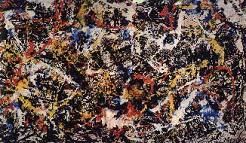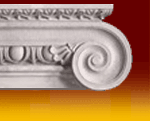|
Abstract Expressionism was a movement about midway through the 20th Century, the fundamental principle of which was the assertion
of an individual's character through painting. As it is not confined to the limits of any one traditional style of representation,
being rather a subjective branch of art, a wide range of styles exist within Abstract Expressionism. This movement is also
therefore recognisable by its underlying ideas rather than specific styles or techniques applied in artworks.
Abstract Expressionism stems primarily from the work of German Expressionist Wassily Kandinsky and the Surrealists. It
was inspired amongst American artists during World War II when experimental European painters such as Yves Tanguy, Marc Chagall,
Max Ernst and Marcel Duchamp brought their works to New York. American painters also gained inspiration from Arshile Gorky
and Hans Hofmann.
Despite there being a large quantity of styles within Abstract Expressionism (the styles being dependant on the diversity
of the painter), two main branches of the movement emerged: action painting and colour-field painting. Action painters focussed
mainly on paint texture and consistency, as well as the artistic gestures of the artist, whereas the colour-field painters
used like colour and shape to distinguish their works. The most famous of action painters include Jackson Pollock, Franz Josef
Kline and Willem de Kooning; one major colour-field painter is Mark Rothko. Influential artists in the movement who used combinations
of both styles are Clyfford Still, Robert Motherwell, Philip Guston, Adolph Gottlieb and Bradley Walker Tomlin.
European Abstract Expressionists were influential on the use of colour (accentuating patches of colour within larger paintings)
and rejected classical structure in the depiction of subject matter. Major European painters in the movement included Pierre
Soulages, Jean Dubuffet and Nicolas de StaŽl.

"Convergence" (1952) - Jackson Pollock
This painting can be used to illustrate the spontaneity and unstructured nature of Abstract Expressionism, specifically
of the action painters, Jackson Pollock being considered one of the most distinguished of action painters. This is noticeable
in the composition of the painting: an image formed by violent and seemingly spontaneous application of paint to canvas.
Back
|

